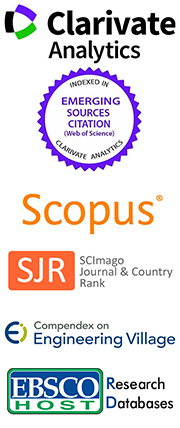Can Kuala Lumpur Achieve Carbon Neutrality by 2050?
Abstract
Keywords
Full Text:
PDFReferences
United Nations Framework Convention on Climate Change, “Paris Agreement,” FCCC/CP/2015/L.9/Rev.1, 12 Dec. 2015. [Online]. Available at: https://unfccc.int/sites/default/files/english_paris_agreement.pdf
IPCC, Climate Change 2023: Synthesis Report – Longer Report. Contribution of Working Groups I, II and III to the Sixth Assessment Report of the Intergovernmental Panel on Climate Change, Core Writing Team, H. Lee and J. Romero, Eds. Geneva, Switzerland: IPCC, 2023. doi:10.59327/IPCC/AR6‑9789291691647.
Hatchadorian R., Best R., Wholey K., Calven A., Levine E., Tepfer S., Swett B., Walsh M.J., Pollack A., Perez T., Castigliego J.R., and Cleveland C.J., 2019. Carbon Free Boston: Buildings Technical Report, Boston University Institute for Sustainable Energy and Arup Group Ltd., Boston, MA, USA, 2019. [Online]. Available: https://sites.bu.edu/cfb/technical-reports/
City of Yokohama, Yokohama City Strategy on the Use of Renewable Energy: Outline, Jul. 2020. [Online]. Available at: https://carbonneutralcities.org/wp-content/uploads/2020/07/Yokohama-City-Strategy-on-the-Use-of-Renewable-Energy-Outline.pdf
Abdul-Azeez A., 2016. Measuring and Monitoring Carbon Emission to Promote Low-Carbon Development in Johor Bahru. Working Paper Series, 2016.
C40 Cities and McKinsey and Company, Focused Acceleration: A Strategic Approach to Climate Action in Cities to 2030, 2017. [Online]. Available: https://www.mckinsey.com/~/media/mckinsey/business%20functions/susustainabili/our%20insights/a%20strategic%20approach%20to%20climacl%20action%20in%20cities%20focused%20acceleration/focused-acceleration.pdf
Hansen K.B. and A. Agger. 2022. Copenhagen CO₂ neutrality in 2025? A polycentric analysis of urban climate governance in Copenhagen 2006–2020. Environmental Policy and Governance 33(3): 288–300. doi: 10.1002/eet.2030
Loh J.R. and S. Bellam2024. Towards net zero: Evaluating energy security in Singapore using system dynamics modelling. Applied Energy 358: 122537 [Online]. Available: https://doi.org/10.1016/j.apenergy.2023.122537
Sofuoğlu E. and D. Kirikkaleli. 2022. Towards achieving net zero emission targets and sustainable development goals, can long-term material footprint strategies be a useful tool? Environmental Science and Pollution Research 30: 26636–26649, Nov. 2022. [Online]. Available: https://doi.org/10.1007/s11356-022-24078-2
Calvin K., Patel P., Clarke L., Asrar G., Bond-Lamberty B., Cui R.Y., Di Vittorio A., Dorheim K., Edmonds J., Hartin C., Hejazi M., Horowitz R., Iyer G., Kyle P., Kim S., Link R., McJeon H., Smith S.J., Snyder A., Waldhoff S., and Wise M., 2019. GCAM v5.1: representing the linkages between energy, water, land, climate, and economic systems. Geoscientific Model Development 12: 677–698. [Online]. Available: https://doi.org/10.5194/gmd-12-677-2019
Emission Index. 2024. Greenhouse gas emissions in Malaysia, 2024. [Online]. Available: http://www.emission-index.com/countries/Malaysia. Accessed: May 30, 2024.
Penn State Department of Meteorology. 2015. The Kaya Identity, meteo 469, from Meteorology to Mitigation: Understanding Global Warming," 2015. [Online]. Available: https://e-education.psu.edu/meteo469/node/213
Wong L., 2022. Speech by Deputy Prime Minister and Minister for Finance Lawrence Wong at the Singapore International Energy Week. Prime Minister's Office Singapore, Oct. 25, 2022. [Online]. Available: https://www.pmo.gov.sg/Newsroom/DPM-Wong-at-Singapore-International-Energy-Week
DOI: https://doi.org/10.64289/iej.25.0206.7798113


